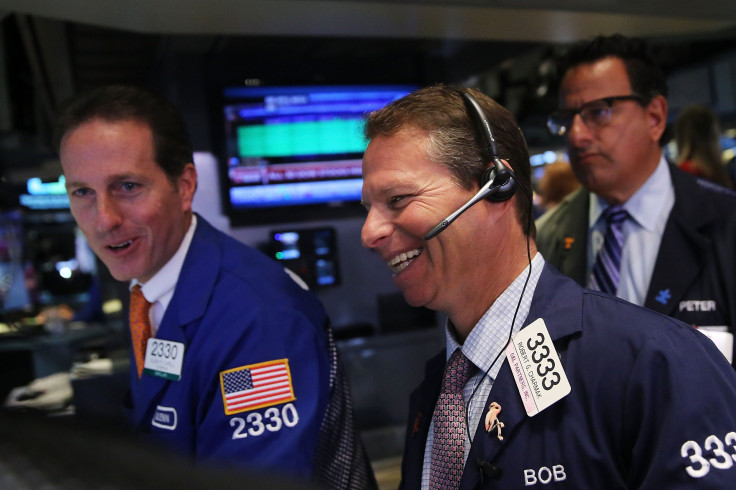Dow Jones Industrial Average Soars After China Cuts Interest Rates

This story was updated at 1:30 p.m. EDT
U.S. stocks rebounded Tuesday, with the Dow Jones Industrial Average soaring by more than 400 points, after China cut its benchmark interest rate for the fifth time in nine months in an attempt to boost slowing economic growth. The move comes after global stock markets sold off sharply a day earlier on fears of an abrupt slowdown in the world’s second-largest economy.
The Standard & Poor's 500 gained more than 2 percent, pulling the index out of correction territory after Monday's sell-off pushed it in negative territory for the year.
In afternoon trading, the Dow halved its gains made earlier in the trading session.
The Dow Jones Industrial Average (INDEXDJX:.DJI) gained 188.30 points, or 1.2 percent, to 16,059.65. The S&P 500 index (INDEXSP:.INX) rose 27 points, or 1.7 percent, to 1,920. And the Nasdaq composite (INDEXNASDAQ:.IXIC) gained 98 points, or 2.2 percent, to 4,623.84.
Global markets rallied higher after the Chinese central bank announced plans to cut its one-year lending rate to 4.6 percent, a move the People's Bank of China said would provide long-term liquidity and help support the economy. The move came after China’s benchmark Shanghai composite index slid further Tuesday, losing 7.6 percent to close below the psychological 3,000 mark.
Alan Valdes, vice president of trading at DME Securities, welcomed the central bank’s move, but noted that problems of slowing growth still exit. “Cutting rates in China alleviates some of the short-term pain, but it doesn’t cure the patient. The problems that existed on Monday are still there,” Valdes said.
In recent years, late summer has seen bouts of stock market volatility. It is quite normal for stock prices to decline at some point almost every year, says Burt White, chief investment officer for LPL Financial.
Since 1980, the stock market, as measured by the S&P 500, declined into negative territory at some point during the calendar year in every year except four. The average peak-to-trough decline during any year is 15 percent, even though stocks finish the year higher 70 percent of the time, White said.
"At times like these we need to remind ourselves that market downturns are part of investing. The length of the current bull market, the lack of notable pullbacks, and the length of time without a correction may have increased investor sensitivity to pullbacks," White said in a note.
Following China's announcement Tuesday, the pan-European Stoxx 600 leaped more than 4 percent, while France's CAC and Germany's DAX rallied 4.7 percent and 4.8 percent, respectively.
All 10 sectors in the S&P 500 traded higher, led by a nearly 3 percent gain in technology stocks. The healthcare, consumer discretionary and consumer staples sectors gained more than 2 percent.
All 30 stocks in the Dow traded higher, led by iPhone maker Apple Inc. (NASDAQ:AAPL), which rallied nearly 6 percent to $111.11.
The yield on the U.S. 10-year Treasury edged higher Tuesday to 2.09 percent from 2.01 percent Monday. Meanwhile, the U.S. dollar edged higher against major currencies after sinking a day earlier amid growing uncertainty of whether the U.S. Federal Reserve may wait even longer than planned to raise interest rates.
U.S stocks recovered Monday from some of the morning's mayhem that saw the Dow plummet more than 1,000 points in the first four minutes of trading. By the close, the Dow was down just 588 points.
The CBOE Volatility Index (VIX), widely considered the best gauge of fear in the market, traded near 31 Tuesday after as much as 90 percent on Monday, its highest level since 2009. The New York Stock Exchange invoked Rule 48 for the second day in a row Tuesday to pre-empt panic selling, Dow Jones reported.
© Copyright IBTimes 2024. All rights reserved.






















